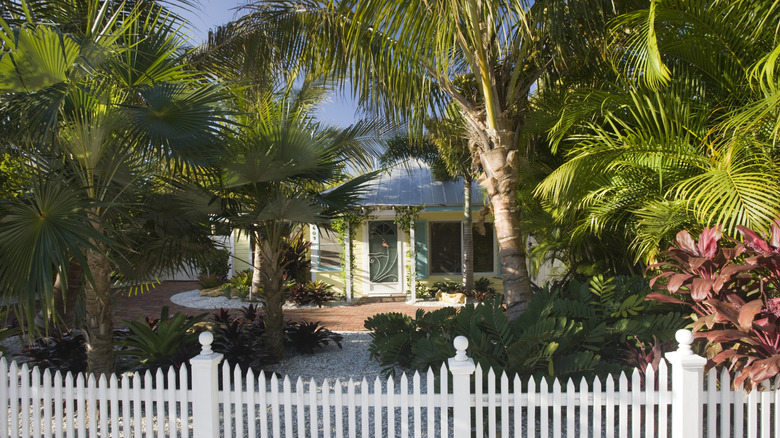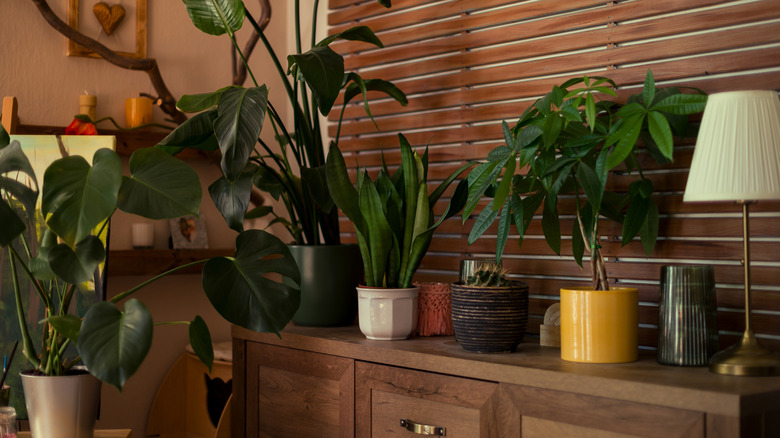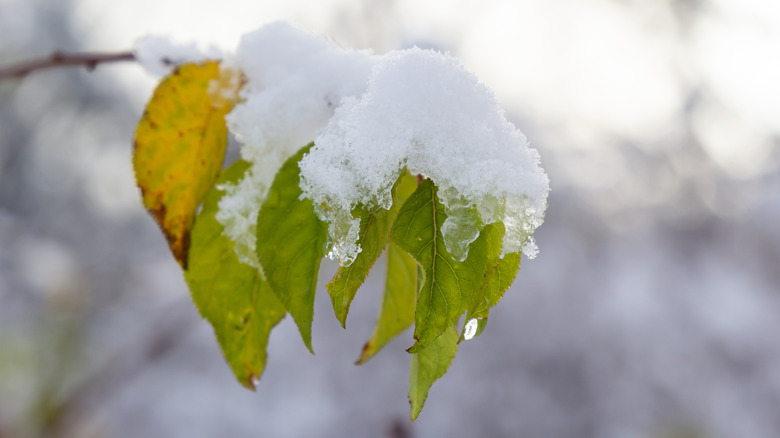How To Prepare Your Tropical Plants For Winter
We may receive a commission on purchases made from links.
Check the weather forecast. Are the temperatures dropping? Is frost expected in your area? If the answer is "yes," then you must work fast to save the tropical plants that beautify your yard, as anything below 40 degrees will harm and possibly kill them. When temperatures reach freezing, your tropical plants will certainly die, so if you want them around for more than a few seasons, you need to prepare.
Prepping your home for cold weather is a necessity every winter, which includes protecting your plants. All but the hardiest of plants are prone to cold injuries in the winter, which is why it's important to landscape with native plants. These are naturally best suited to the weather in your area and won't require so much maintenance. Still, it's difficult to resist the allure of tropical plants, with their vibrant green fronds and colorful blooms. Bringing your tropical plants inside your home is the best way to ensure they stick around. For plants that can't be moved, however, there are other ways to overwinter them outdoors.
Bring as many tropical plants inside as you can
When your plants are a little chilly but still happy with temperatures around 50 degrees, you should consider moving them indoors. The biggest change you can make this winter to help your tropical plants thrive is increasing the humidity around them. While you can't accomplish that in your garden, you can control it in your house.
Those that are already in pots will be simple to move, but you might need to also transplant some sensitive species from your garden into individual pots. Palm trees, Chinese hibiscus (Hibiscus rosa-sinensis), and mandevilla vine (Mandevilla sanderi) are among the plants that you should do this with. To increase humidity once they are inside, use humidifiers and diffusers. Also be sure to cluster the plants close together, which creates a microclimate.
Many outdoor tropical plants can grow to be quite large, so if you find yourself running out of space for them in the sunny areas of your home, consider storing them in a garage or basement. What you lose in sunlight can be compensated for with grow lamps like the GHodec Grow Light with Stand. Don't worry too much if your plants still drop leaves even if you're able to maintain bright light levels. This is all part of the acclimation process. As you move your plants, also make sure to inspect them for bugs so you don't accidentally cause an infestation.
Overwinter tropical plants that have to stay outdoors
In summer, your backyard can be a tropical getaway. In winter, however, it can become a graveyard — for your tropical plants, at least. Don't give up on your plants just yet, though. Even if they're too large or cumbersome to move into your home, you can overwinter them outdoors. As fall comes into full swing, spread mulch, straw, or an extra layer of soil around the base of plants to insulate them. This traps warmth and moisture beneath the earth.
To further insulate tropical plants, you can cover them with things like plastic sheeting, or you can construct individual greenhouses for them out of PVC piping and burlap. This should be done toward the end of fall, when the plants enter their dormant period. Make sure to leave room for air to circulate around the plant so that it doesn't get too steamy inside the covering as the sun heats up the earth during the day. When covering your plants, be sure not to wrap them too tightly as well.


